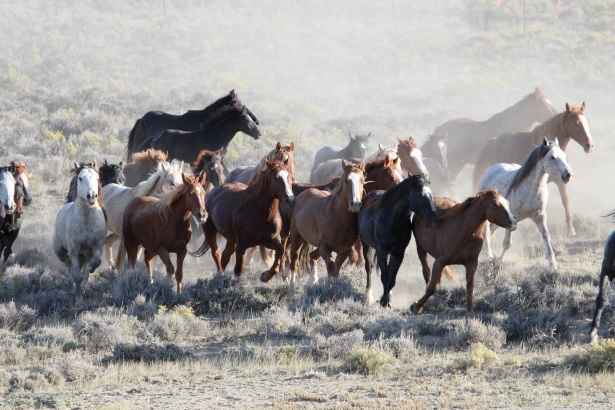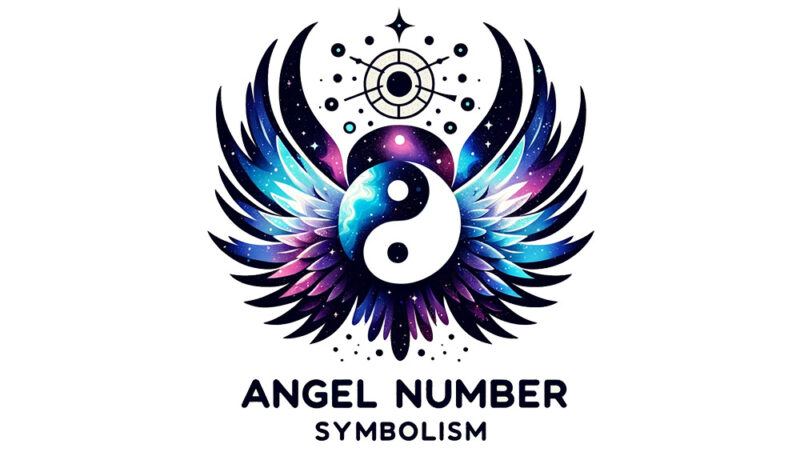Welcome to our exploration of the wild horse tamed spiritual metaphor. In this article, we delve into the equine symbolism and the spiritual significance of horses. We uncover the metaphoric meaning of taming wild horses and how it relates to our personal growth and inner journey.
The wild horse tamed spiritual metaphor is a powerful symbol that resonates across various spiritual traditions. It represents the profound transformation of conquering our uncontrollable desires, impulses, fears, and worries.
Much like taming a wild horse, we learn to control and guide the mind’s energy through mindfulness, meditation, and self-discipline.
This metaphor embodies the journey from inner chaos to inner harmony and highlights our connection to the divine. By harnessing our inner strength, we can create a profound sense of peace and find clarity amidst the chaos of everyday life.
It reminds us that we have the power to tame our wild thoughts and emotions and embrace a more balanced and centered existence.
Key Takeaways:
- The wild horse tamed spiritual metaphor represents personal growth and inner peace.
- Taming the wild horse symbolizes the journey of conquering uncontrollable desires and impulses.
- The metaphor emphasizes the transformation from inner chaos to inner harmony.
- Mindfulness, meditation, and self-discipline are crucial in controlling and guiding the mind’s energy.
- By harnessing our inner strength, we can achieve spiritual growth and a deeper connection to the divine.

The Nature of the Wild Horse
The wild horse is a symbol of freedom and untamed energy. It represents the untamed mind full of chaotic thoughts and emotions. The wild horse symbolizes the uncontrolled desires and impulses that need to be tamed through self-discipline.
It embodies the struggle between the unruly ego and the need for spiritual growth and inner peace.
When we think of a wild horse, we imagine a creature running free, untethered by constraints. In many ways, the wild horse mirrors our own untamed desires and passions. Just like the wild horse, our minds can often feel restless and out of control, filled with thoughts and emotions that seem to have a life of their own.
It is the battle between these uncontrolled desires and the need for self-discipline that defines the essence of the wild horse symbolism.
The wild horse represents the part of us that craves instant gratification, that wants to indulge in every desire without considering the consequences. It embodies impulsiveness and recklessness. However, it is through self-discipline that we can rein in these uncontrolled desires and impulses.
By exercising self-discipline, we can train our minds and guide our actions towards a more peaceful and fulfilled life.
The struggle between uncontrolled desires and self-discipline is a central theme in the journey towards spiritual growth and inner peace. It is through disciplining the wild horse of our minds that we can find a sense of balance, tranquility, and purpose.
By taming the wild horse within, we gain control over our thoughts, emotions, and actions, allowing us to navigate life’s challenges with grace and inner strength.
| Wild Horse | Tamed Horse |
|---|---|
| Symbolizes uncontrolled desires and impulses | Represents self-discipline and control |
| Embodies chaos and restlessness | Reflects inner harmony and peace |
| Driven by the unruly ego | Surrenders to a higher power |
| Lacks direction and purpose | Lives for a higher purpose |
The Environment of the Tamed Horse
Once the wild horse is tamed, it becomes a domesticated horse living in stables. This represents a shift from wild, open spaces to a more controlled environment. The tamed horse symbolizes the ability to resist worldly temptations and maintain a spiritual focus. It highlights the importance of creating a supportive environment for personal growth and spiritual development.

Behavior of the Wild Horse vs. the Tamed Horse
The behavior of the wild horse is often characterized by aggression and fear, driven by the ego’s desires and impulses. In contrast, the tamed horse exhibits obedient and trusting behavior, surrendering to a higher power.
This stark contrast in behavior between the wild horse and the tamed horse symbolizes the need for a shift from ego-driven actions to surrendering to a higher power in order to attain spiritual growth and inner peace.
| Wild Horse Behavior | Tamed Horse Behavior |
|---|---|
| Aggressive | Obedient |
| Fearful | Trusting |
| Ego-driven actions | Surrendering to a higher power |
Through the metaphor of the wild horse and the tamed horse, we are reminded of the importance of letting go of our ego-driven actions and surrendering to a higher power. This surrender allows us to cultivate obedient and trusting behavior, paving the way for spiritual growth and a deeper connection with the divine.
Guiding the Wild Horse
The wild horse represents the lack of spiritual guidance, while the tamed horse represents following a spiritual path. It is a metaphor that emphasizes the importance of seeking spiritual guidance and following a disciplined practice to tame the wildness of the mind and connect with the divine.
In our journey of taming the wild horse within, we often encounter challenges and obstacles. This lack of spiritual guidance can leave us feeling lost, confused, and disconnected from our true selves. However, by seeking the help of mentors, therapists, or spiritual advisors, we can receive the guidance and support needed to navigate this transformative path.
These guides provide valuable insights, wisdom, and tools to help us cultivate self-discipline, develop a spiritual practice, and overcome inner struggles.
They offer a map for navigating the complexities of our minds and emotions, guiding us towards inner harmony and a deeper connection with the divine.
By following a spiritual path under the guidance of experienced individuals, we can learn to harness the energy of the wild horse and direct it towards self-improvement, spiritual growth, and ultimately, inner peace.
As we embark on this journey, we are reminded that taming the wild horse is not a solitary endeavor. It requires humility, openness, and a willingness to surrender to the guidance of others. Through this process, we not only transform ourselves but also forge meaningful connections with those who have walked the path before us.
Let us now explore the various methods and practices that can assist us in the process of guiding the wild horse along the spiritual path, ultimately leading us to a state of self-discovery and spiritual fulfillment.

Purpose of the Wild Horse vs. the Tamed Horse
The wild horse represents the primal instinct of survival and self-preservation. It embodies the innate need to protect oneself and ensure personal well-being. However, the tamed horse goes beyond self-preservation and serves a higher purpose. It recognizes the importance of contributing to something greater than oneself and working towards a collective goal.
By living for oneself, the wild horse focuses primarily on individual needs and desires. It prioritizes personal survival and fulfillment above all else. In contrast, the tamed horse understands the value of serving others and working towards a higher purpose. It recognizes that true fulfillment and meaning in life can be found in selflessly contributing to the well-being of others.
While the wild horse may be driven by a sense of self-interest and the pursuit of personal gain, the tamed horse is motivated by a deep-seated desire to make a difference and positively impact the world. It understands that a life lived solely for oneself may be limited in its scope and ultimately unfulfilling.
“The purpose of life is not to be happy. It is to be useful, to be honorable, to be compassionate, to have it make some difference that you have lived and lived well.” – Ralph Waldo Emerson
Choosing to live for a higher purpose requires a shift in perspective and a commitment to something greater than oneself. It involves recognizing the interconnectedness of all beings and understanding that our actions have the power to create positive change in the world.
The tamed horse serves as a symbol of the transformative power of purpose-driven living. It inspires us to go beyond our own needs and desires and dedicate ourselves to a higher cause.
By embracing a sense of duty and meaning in life, we can experience a profound sense of fulfillment and contribute to the betterment of society as a whole.
The Benefits of Living for a Higher Purpose
Living for a higher purpose brings numerous benefits to both individuals and communities. Some of these benefits include:
- Fulfillment: Living a purpose-driven life gives us a sense of fulfillment and satisfaction that goes beyond personal happiness. It provides a deeper sense of meaning and fulfillment.
- Connection: When we live for a higher purpose, we foster deeper connections with others and cultivate a sense of belonging. We recognize that we are part of something greater than ourselves.
- Impact: By serving a higher purpose, we have the opportunity to make a positive impact on the world and leave a lasting legacy.
- Resilience: Living for a higher purpose gives us the strength and resilience to overcome challenges and navigate difficult times. It provides a sense of direction and clarity.
- Personal Growth: Embracing a higher purpose requires continuous personal growth and self-improvement. It challenges us to step out of our comfort zones and strive for excellence.
Choosing to live for a higher purpose is a transformative decision that can change the course of our lives. It allows us to tap into our full potential and contribute to something greater than ourselves.
| Living for Oneself | Living for a Higher Purpose |
|---|---|
| Focus on personal survival | Focus on serving others |
| Limited impact and fulfillment | Profound impact and fulfillment |
| Self-interest and personal gain | Selflessness and collective well-being |
| Individualistic mindset | Connected and purpose-driven mindset |
Transformation through Taming
The process of taming the wild horse is a transformative journey from an unpredictable and dangerous state to a useful and reliable state. It symbolizes the transformation of the self through self-discipline and inner growth.
Taming the wild horse represents the spiritual path of personal transformation, where one learns to control the mind, overcome challenges, and attain spiritual growth and inner peace.
A wild horse, untamed and full of untamed energy, can be unpredictable and, at times, dangerous. However, through the process of taming, it becomes a reliable and useful companion, obedient and trustworthy. This transformation mirrors the inner growth and self-discipline required for spiritual development.
Similar to taming a wild horse, the journey of inner transformation can be challenging and require discipline. It involves taming the mind and controlling thoughts, desires, and impulses. By harnessing self-discipline, we can overcome our inner obstacles and grow spiritually.
“Taming the wild horse represents the spiritual path of personal transformation, where one learns to control the mind, overcome challenges, and attain spiritual growth and inner peace.”
Through self-discipline and inner transformation, we can harness our energy and direct it towards spiritual growth. This process allows us to develop a deeper understanding of ourselves, cultivate inner peace, and connect with a higher power.
To illustrate the transformative power of taming the wild horse, let’s consider a table comparing the unpredictable and dangerous nature of the wild horse with the useful and reliable transformation that occurs through the taming process:
| Wild Horse | Tamed Horse |
|---|---|
| Unpredictable | Useful |
| Dangerous | Reliable |
This table highlights the contrast between the untamed wild horse and the tamed horse. It emphasizes the transformative nature of the taming process, where the unpredictable and dangerous qualities are replaced by usefulness and reliability.
By embarking on the journey of taming the wild horse within us, we can experience spiritual growth, inner peace, and a deep connection with our true selves. It is through this process of self-discipline and inner transformation that we can unlock our full potential and discover the true essence of our being.
Uncovering the Meaning Behind the Wild Horse Tamed Spiritual Metaphor
The wild horse tamed spiritual metaphor captures the journey and struggles of the spiritual life. It serves as a profound symbol of the untamed desires, passions, and instincts that often divert us from our spiritual path. Just like taming a wild horse, the metaphor illustrates the process of spiritual transformation, where we learn to control our desires, emotions, and actions, redirecting them towards self-improvement and spiritual growth. It acts as a powerful reminder of the possibility of transformation and the pursuit of inner peace.
Taming the Mind: The Gateway to Spiritual Transformation
Taming the wild horse metaphor underscores the importance of taming our unruly minds to embark on a journey of spiritual transformation. Our minds, much like wild horses, are driven by untamed desires and passions that can lead to turmoil and distraction.
By cultivating self-discipline, mindfulness, and inner awareness, we can gradually rein in our wild thoughts, redirecting their energy towards our spiritual goals.
“The mind is a wild stallion. The spiritual seeker becomes the master horseman, gently guiding the mind towards the path of enlightenment.”
Through practices such as meditation, self-reflection, and mindfulness, we can tame the wild horse within, gaining control over our thoughts and emotions. This process empowers us to choose our actions consciously and align them with our spiritual aspirations.
The Struggles and Triumphs of the Spiritual Journey
The wild horse tamed spiritual metaphor acknowledges the inherent struggles encountered along the spiritual journey.
Taming a wild horse requires unyielding patience, unwavering perseverance, and boundless compassion. Similarly, our path towards spiritual transformation is not without its challenges.
Throughout our journey, we confront the resistance of our own ego, the allure of worldly temptations, and the uncertainties of self-discovery. However, it is in these struggles that we find opportunities for growth, resilience, and spiritual maturation.
Like a wild horse, the untamed desires and passions within us may at times resist our attempts at control. Yet, it is through these triumphs over our inner obstacles that we can experience true spiritual liberation and forge a profound connection with the divine.
The Ultimate Reward: Inner Peace and Spiritual Transformation
When we successfully tame the wild horse of our minds and commit to the journey of spiritual transformation, we unlock the ultimate reward: inner peace. The tamed horse becomes a symbol of our inner harmony, as our desires and passions are harnessed for a higher purpose.
Just as a tamed horse serves its master faithfully and wholeheartedly, we, too, become aligned with a greater power. Surrendering our ego-driven actions, we open ourselves to the guidance and wisdom of the divine, allowing spiritual growth to unfold.

Through the taming of our minds, we rediscover our true selves and cultivate a deep sense of peace, authenticity, and purpose. The wild horse tamed spiritual metaphor thus reminds us of the transformative power that lies within us, urging us to embark on the journey of spiritual exploration and embrace the untapped potential of our souls.
Journey and Struggles of the Spiritual Life
| Stages | Challenges | Transformation |
|---|---|---|
| 1. Awakening | Ignorance, lack of self-awareness | Self-realization, recognition of spiritual path |
| 2. Discipline | Ego-driven actions, undisciplined mind | Self-discipline, taming of the mind |
| 3. Growth | Inner resistance, challenges to spiritual practice | Spiritual maturation, resilience |
| 4. Surrender | Attachment to ego, worldly distractions | Surrender to the divine, spiritual connection |
| 5. Transformation | Old patterns, inner obstacles | Inner peace, spiritual liberation |
Conclusion
The wild horse tamed spiritual metaphor holds immense significance as a symbol of personal growth, self-discipline, and the pursuit of inner peace.
It beautifully illustrates the journey of taming the untamed mind, leading to a deeper connection with the divine. By harnessing our inner energy and desires, we have the power to transform ourselves and embark on a spiritual path.
Throughout this metaphor, we learn the importance of discipline, guidance, and perseverance on our quest for spiritual growth and enlightenment.
Just as a wild horse is tamed through mindful control and self-discipline, we too must tame our unruly impulses and distractions to attain inner harmony. By doing so, we can overcome the chaos within and discover a greater purpose in life.
The wild horse tamed spiritual metaphor reminds us that true transformation comes from surrendering ego-driven actions and embracing the will of the divine.
As we follow a disciplined practice and seek spiritual guidance, we find ourselves on a path of self-discovery and personal evolution.
The journey to tame the wild horse mirrors the challenges, struggles, and rewards of our own spiritual journey.
In conclusion, the wild horse tamed spiritual metaphor is a powerful reminder of our ability to conquer the chaos within and find solace in our connection with the divine.
By taming the untamed mind, we unleash the transformative power of self-discipline and inner growth. Let us embark on this journey together, harnessing our inner strength and nurturing our spiritual selves.
FAQ
What does the wild horse tamed spiritual metaphor represent?
The wild horse tamed spiritual metaphor represents the journey of personal growth and inner peace, symbolizing the transformation from inner chaos to inner harmony and the connection to the divine.
What does the wild horse symbolize?
The wild horse symbolizes untamed energy, uncontrolled desires, and impulses that need to be tamed through self-discipline.
What does the tamed horse symbolize?
The tamed horse symbolizes the ability to resist worldly temptations, maintain a spiritual focus, and surrender to a higher power.
What is the behavior of the wild horse compared to the tamed horse?
The wild horse exhibits aggressive and fearful behavior, driven by the ego’s desires and impulses. In contrast, the tamed horse exhibits obedient and trusting behavior, surrendering to a higher power.
Why is guidance important in taming the wild horse?
Guidance is important in taming the wild horse as it provides support and guidance on the journey of self-discipline and spiritual growth.
What is the purpose of the wild horse compared to the tamed horse?
The wild horse represents the desire for survival and self-preservation, while the tamed horse represents serving and working for a higher purpose.
What does taming the wild horse symbolize?
Taming the wild horse symbolizes the spiritual path of personal transformation, where one learns to control the mind, overcome challenges, and attain spiritual growth and inner peace.
What is the significance of the wild horse tamed spiritual metaphor?
The wild horse tamed spiritual metaphor reminds us that we have the power to transform ourselves, tame our desires, and find inner peace through self-discipline and spiritual growth.
What is the conclusion of the wild horse tamed spiritual metaphor?
The wild horse tamed spiritual metaphor represents the journey of personal growth, self-discipline, and attaining inner peace by harnessing our inner strength and connecting with the divine.




